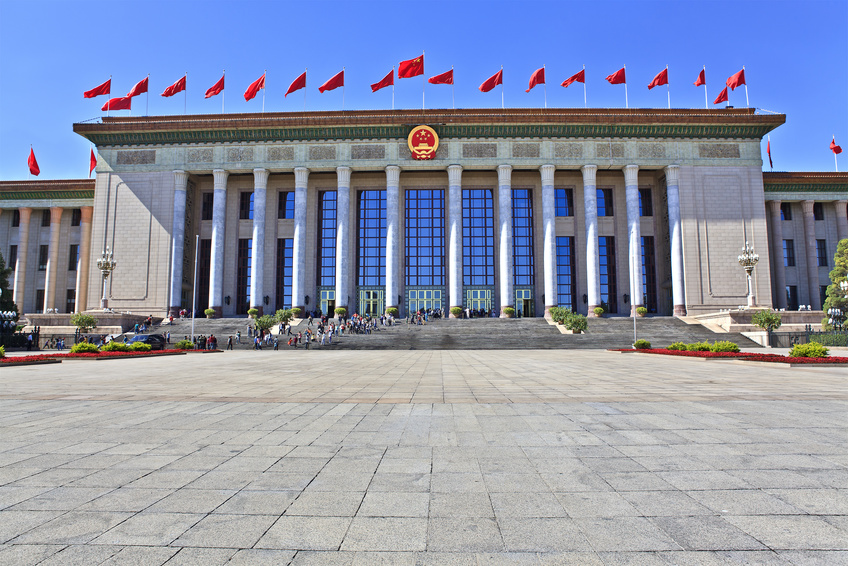According to a Circular [2019] No. 2 (the Circular) released by the Tariff Commission of the State Council (the Tariff Commission), which is a multi-ministerial board led by the Ministry of Finance (MoF), on May 13, 2019, China has introduced a product exclusion process, expected to be officially launched on June 3, 2019. This is the equivalent of the product exclusion process already put in place by the US Trade Representative’s office,
aiming to provide exemption from the Chinese retaliatory tariffs applicable to the US origin goods based on particular products.
We set forth below an overview of this exclusion process and our recommended strategies and immediate next steps for multinational corporations that sell US origin products to China.
A. Overview of the application processes and timelines
1. Eligible applicants
The eligible applicants, according to the Circular, include Chinese companies that import, manufacture or use the products concerned, as well as the related industry associations or chambers of commerce.
Under this definition, Chinese importers and end users of the in-scope products are clearly designated as eligible applicants for a product exclusion. Nevertheless, further clarifications may be released, when the June 3, 2019 deadline draws closer, on whether and how a manufacturer of the US origin products sold to China can participate in this product exclusion process, independently from its Chinese importer, by designating a Chinese agent.
Another important data point to consider is that the Circular “encourages” industry associations to file requests collectively on behalf of their individual members, in order to optimize the use of administrative resources. An applicant that has its name included in a request filed by an industry association is no longer eligible to file its own request directly with MoF.
Depending on further guidance to be provided by the Tariff Commission on the eligible Chinese party which a foreign manufacturer can designate to file a request on its behalf, the “industry association” in this context most likely refers to a Chinese industry association or chamber of commerce, which is affiliated with Chinese government.
2. Application timelines
The Circular bifurcates the application timelines between (i) the US$50 billion worth of U.S. products, on which China imposed retaliatory tariffs at 25% through two tariff lists, effective from July 2018 and August 2018, respectively (collectively Batch One Products), and (ii) the US$60 billion worth of US products, on which China imposed retaliatory tariffs at rates ranging from 5% to 10%, effective from September 2018 (Batch Two Products). The retaliatory tariffs applicable to Batch Two Products are further divided into four lists and the applicable rates are expected to increase to up to 25% as of June 1, 2019.
The request period for the product exclusion of Batch One Products is from June 3, 2019 to July 5, 2019, and the request period for the product exclusion of Batch Two Products is from September 2, 2019 to October 18, 2019.
Upon receipt of the requests, the Tariff Commission undertakes to examine the individual requests, conduct industry surveys and seek advice from subject matter experts, industry associations and government departments concerned, in order to render its final decision. The decision will be announced through the exclusion lists published by the Tariff Commission in due course. There have been no specific timelines for the publication of the
final exclusion lists.
3. Procedural and substantive requirements for the submission
The request for product exclusion needs to be filed electronically through the designated MoF website. There is a designated form which the applicant is required to complete and upload to the MoF website, along with the related supporting documents. Such designated form, as well as the format instructions on the supporting documents, are expected to be published on the MoF website when the June 3, 2019 deadline draws closer.
The submission must be filed on a product-specific basis, with each product covering one eight-digit or lower level tariff category. Each submission should include the facts and related data to substantiate the following factors which MoF will consider in deciding whether to grant a product exclusion request:
- The difficulty in finding substitute products in alternative markets;
- The serious financial hardship caused on the applicant; and
- The significant adverse impacts of the tariffs on the related industries, including the structural impacts on, among other aspects, the industrial development, technology advancement, employment and environmental protection, or the serious social consequences of the tariffs.
Although further instructions are expected to be released, it is likely that an application which fails to address all these three factors be deemed deficient and hence rejected by MoF.
The Circular has not elaborated on the requirements for the supporting data. Given the nature of this process and the constrained timeframe, it is likely that MoF apply the format requirements similar to those in other administrative investigations involving foreign interested parties, such as antidumping investigations, in which photocopies of original documents and data worksheets, without being notarized, are generally acceptable.
4. Effects of the product exclusion
A product included in the exclusion lists may be, at the Tariff Commission’s option, either (i) an entire eight-digit-level tariff category, or (ii) assigned with a specific ten-digit tariff code in order to be distinguished from the other products under the same eight-digit tariff category which are not excluded.
The excluded products are exempt from the retaliatory tariff for one year starting from the date of publication of the exclusion lists, and the previously levied retaliatory tariffs may be refunded.
As such a process is product based, in the event the Tariff Commission grants an exclusion request, the exclusion will apply equally to all the same products imported into China.
B. Recommended strategies and next steps
1. Decide the strength of your case and the resources to commit
Like the equivalent process available in the US for the Chinese products subject to Section 301 tariffs, the decision making would be inherently subjective and decisions would be influenced largely by political considerations. As a result, the likelihood of success of such a request may be conceivably low.
That said, for most of the multinational companies involved in export of U.S. origin products to China, participating in the product exclusion process is still meaningful, given the low eligibility threshold for filing the request and the reasonably limited cost of preparing a submission. If an exclusion request is ultimately granted, the return would be tremendous.
In contrast, if a company has a particularly strong case for excluding its products from the tariff lists, as further discussed in point 3 below, committing additional time and resources to construct a more robust submission may be a worthwhile strategy. To our knowledge, before the formal exclusion process was officially released, there had already been US manufacturers that had successfully excluded their products from the tariff lists ultimately published by Chinese government through their lobbying efforts with the government departments concerned.
2. Engage the industry association without compromising the applicant’s individual interest
An applicant would have to choose between filing its own submission and participating in a joint effort with its competitors to file a collective submission in the name of an industry association.
A potential disadvantage of the latter option may be that the industry association, which is a quasi-government body, may have a different perspective than the individual applicants, such that the final submission made by the association may not reflect the key positions and arguments of the individual applicants. Another concern about filing through an industry association is the expanded risk exposure for unintended disclosure of sensitive information to competitors.
That being said, it is still useful to proactively engage the industry associations, which are an important resource of industrial information needed to substantiate the related arguments. Supporting the industry association’s request in a way that does not compromise the individual applicant’s eligibility to file its own request would increase the credibility of the applicant’s own submission.
Last but not least, even if the applicant decides to apply through an industry association, it is still recommended to provide the association with a submission in which the applicant clearly states its key positions together with well-organized supporting documents, and treat this submission as a formal filing with a government agency.
3. Immediate next steps
For multinational corporations that sell US origin products to China, even though it is not entirely clear at this point whether they are eligible to file their product exclusion requests on their own, it is strongly recommended that they start preparing the related information and mobilize the parties involved in the supply chain, in order to maximize the opportunity of achieving a product exclusion.
Specifically, with respect to the information gathering, the following facts, if available, would be particularly helpful:
- Although each applicant is required to address all the three factors as mentioned above in its request, the most convincing arguments from Chinese government’s standpoint would be those related to the adverse impacts on the downstream Chinese industries, including their supply chain sustainability, employment rate, and accomplishment of key government policy objectives, such as environmental protection, industrial upgrading, technology innovation, etc.
- An emphasis on the irreplaceability of the US origin products, due to their unique technical features, unparalleled quality, high cost efficiency or scarcity in the market, etc., as the case may be, would also support the argument that a disruption of the supply of these products would significantly impact the downstream industries.
In the meantime, it is useful to proactively reach out to the other parties involved in the supply chain, including, in particular, the Chinese end users of the US origin products which are Chinese industrial leaders, in order to gather the related information as mentioned above, or encourage these parties to file their own requests as interested parties.



